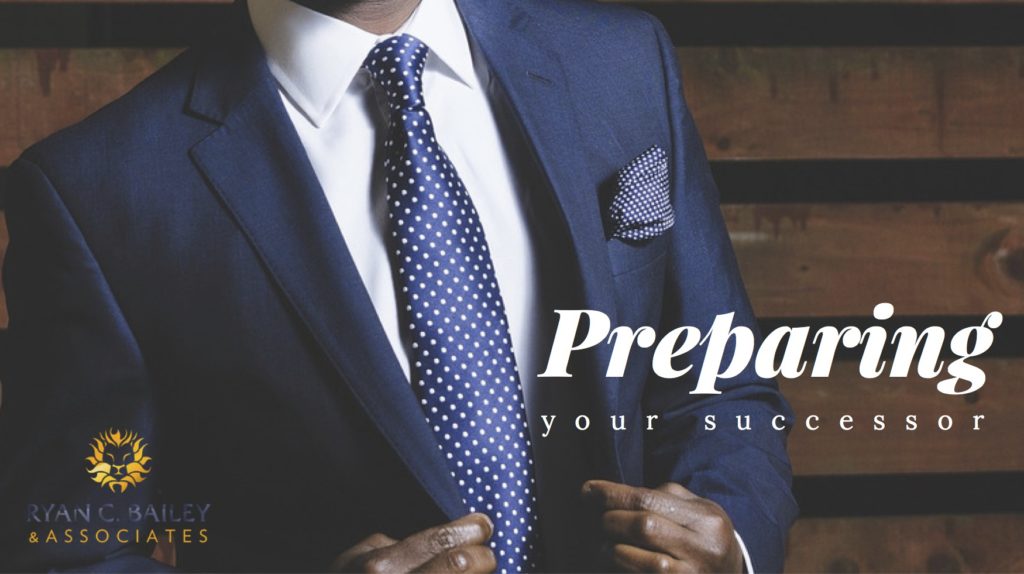 Time and time again, talented, capable executives get passed up for promotions because there isn’t anyone to take their place.
When speaking to their bosses I often hear things like, “I need her there... Who else can do what she does?” and “If he got promoted, it would leave a huge vacuum.”
Time and time again, talented, capable executives get passed up for promotions because there isn’t anyone to take their place.
When speaking to their bosses I often hear things like, “I need her there... Who else can do what she does?” and “If he got promoted, it would leave a huge vacuum.”
We are coming to the end of a new year, a time when many of us are thinking about what goals we want to achieve in the new year. One of the top goals I hear being expressed is to be promoted.
If that is your goal, then please consider which of your team members you will train to succeed you. Also consider how you will train them.
Here are some suggestions:
1. Speak to your boss and key stakeholders about what they would like to see in the person who takes your role.
Your successor will need support from key stakeholders, including your boss, if the transition is going to be a success. A conversation with them ahead of time will allow you to gain buy-in from them as they see the traits develop in the person you will be choosing.
2. Create a job description based on the reality of your role.
How much of the original job description is what you do day in and day out? Writing a realistic job description will help your successor tremendously.
Be sure to focus on what is the most essential part of the role and what are the soft and hard skills necessary to succeed in the role. Also emphasize the appropriate points which key stakeholders said they wanted.
A question I sometimes use with the executives I coach is, “If you could hire a more idealized version of yourself to take over your role, what characteristics would they have?” (BTW- your answers to that question are great for determining what goals to reach for while you yourself are in the role.)
3. Determine who will be your successor and get their buy-in.
After you have the job description, look at your team. Who is likely to be able to match that description and exceed it? It may not be the direct report who is excelling the most. Be sure to think through who has the best potential to far exceed the job description.
Then go and see if that person is interested in being trained to take your role.
If you have a huge role that needs to be broken up (and your management supports that decision), then focus on a couple of successors.
If the best person to take over is not a part of the current team, be sure to keep your direct reports informed. As you bring the new person in, help your direct reports understand your rationale, and explain how they can help the new leader succeed.
4. Train incrementally.
Give your potential successor opportunities to really stretch their skills. Have them assume much more of a leadership role than they have had in specific projects. Coach when necessary. Then have times to debrief afterwards.
5. Create milestones.
Your successor will probably want to know when they will be viewed as being ready to assume the leadership role. The more tangible you can make these milestones, the better. This will help stakeholders to buy in even more.
6. Focus on the future.
Assume that the current problems your team is facing will be resolved, and that there will be new ones in the future. What principles of problem solving does the team need to learn in order to make more effective decisions?
Moreover, think about where the overall organization is heading. What are some key things your successor needs to know and do in order to align with the greater company’s focus?
7. Consider that your successor may not be a clone of you.
There are times when replicating yourself is advantageous, and there are times when having someone different from you take over is exactly what a team needs to move to higher levels of cohesion and performance. What do the team and the overall organization need for this next step?
8. Communicate to your team early that a change is coming.
Knowledge of an imminent change can often lead people to fear the unknown. You can minimize this fear by informing your team as soon as it is appropriate, to help them adjust. Also, be clear about expectations, so that everyone knows what to count on.
9. Use job shadowing.
Your successor needs to know that they are being watched by those above the team members. They need to learn to be the leader before they get the position.
Job shadowing will help them see a template in you. If they are a different personality type than you are, and/or have different gifts than you do, then use some of the shadowing time to discuss how they would have handled things in their style.
10. Set your successor up for success.
Determine what win your successor could have before assuming their role that would help the team to fully embrace their leadership?
However you can set them up for success ahead of time will pay dividends in a smooth transition.
11. Offer to be a mentor/coach for awhile after they’ve assumed your role.
Some successors may not come to you as much as to others. However, it will be great for them to know that you are there until they get their legs under them.
Succession is key to getting promoted. When you have a replacement, your boss and others above you will look for opportunities for you.
If there isn’t someone to take your place, don’t be surprised if getting your next promotion is more difficult than you thought.
Chew On This:
- If you could have a more idealized version of yourself take over your role, what characteristics would they have?
Ryan C. Bailey is an Executive Coach who helps business leaders develop in-demand high performing teams.
*This blog is an amalgamation of a few different clients. No one single client is being singled out.

